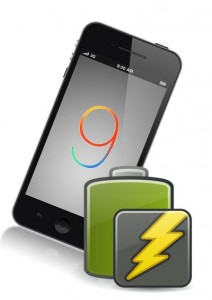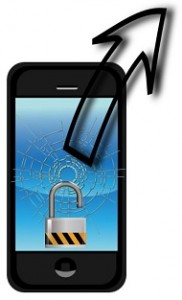The struggles with demands for more time for every charge is forcing owners to have to make a choice.
The latest generations of the iPhone have been including an ever larger number of fancy features and capabilities, beyond the reach of the battery life to keep up in a way that consumers find to be ideal.
Now the iOS 9 could give iPhone users the choice to sacrifice some performance for a longer lasting device.
The idea behind the new Low Power mode in the iOS 9 upgrade is that battery life can be saved while using the features of the device, instead of having to stick to Airplane Mode or scramble to plug the device into a wall outlet. The drawback is that in exchange for the added juice, it compromises some of the device performance. These may not involve hugely important parts of performance, but it means that things will run more slowly and the picture won’t be at its top level.
That said, the changes will allow a user to keep their battery life going for up to 3 more hours.
 This is the first time that Apple has made a move like this. The Low Power mode will shut down the background activity and decrease the performance to help to squeeze up to three more hours out of the smartphone battery.
This is the first time that Apple has made a move like this. The Low Power mode will shut down the background activity and decrease the performance to help to squeeze up to three more hours out of the smartphone battery.
According to a number of leading tech rumor sites, such as Geekbench 3 and MacRumors when running the beta of iOS 9 on the iPhone 6 Plus, the single core processor test score was 1606 and the multicore test received 2897. That said, when running Low Power mode, the figures reduced by about 40 percent, bringing them to 1019 and 1751, respectively. The notes that were taken seemed to imply that it brings the speed of the device back to the days of the iPhone 5S, but that when it is between using your mobile device at a reduced speed or not using it at all, it is an easy choice.
Overall, it is more than likely that the up to three hours will be helpful, but that portable phone chargers will continue to be the key to the kind of battery life that iPhone users want. After all, the reason that many people purchased those devices, in the first place, is for their performance!
The vulnerability that has been identified in some of the tech companies handsets could affect up to 600 million.
The mobile security news involving a flaw in many Samsung smartphones is spreading around the globe as estimates have stated that this issue could impact as many as 600 million people worldwide.
The mobile technology flaw could potentially allow Samsung Galaxy users to be spied upon by hackers.
The phones that could be impacted by the mobile security issue include the Samsung Galaxy S4, S4 Mini, S5 and S6. It comes in the form of a vulnerability that could make it possible for hackers to gain access to the microphone and camera on the device and to spy on users.
According to Buster Johnson of the National Association of Counties Cyber Security Task Force Team, “Hackers will basically be able to take control of a person’s cell phone and have the possibility of accessing a person’s personal information stored on their phone, which could include bank account passwords and other sensitive data.”
This suggests that the mobile security flaw could place users at a greater threat than just their privacy.
 Data and identity theft as well as financial issues could also be thrown into the mix if the wrong information is accessed by the wrong people.
Data and identity theft as well as financial issues could also be thrown into the mix if the wrong information is accessed by the wrong people.
The smartphone security flaw was first identified by researcher Ryan Welton of NowSecure, back in 2014. Shortly thereafter, the security teams at both Google Android and at Samsung were notified of the problem.
The NowSecure blog includes a post from Welton that explained that the source of the vulnerability is in the Swift keyboard, which is pre-installed on the majority of Samsung devices. It is not possible for a user to disable or uninstall it, and its updates occur automatically on their own or when the device has been rebooted.
The mobile security problem comes into play when that update occurs, because the method of fetching the update is not secure if a hacker has access to the network traffic of the device user, for instance, in the case of a public WiFi hotspot. The attacker could use that unsecure network to pose as a server for Swiftkey and then exploit the update, executing a code that would give the hacker privileged user access to the device.
 This is the first time that Apple has made a move like this. The Low Power mode will shut down the background activity and decrease the performance to help to squeeze up to three more hours out of the smartphone battery.
This is the first time that Apple has made a move like this. The Low Power mode will shut down the background activity and decrease the performance to help to squeeze up to three more hours out of the smartphone battery.
 Data and identity theft as well as financial issues could also be thrown into the mix if the wrong information is accessed by the wrong people.
Data and identity theft as well as financial issues could also be thrown into the mix if the wrong information is accessed by the wrong people.